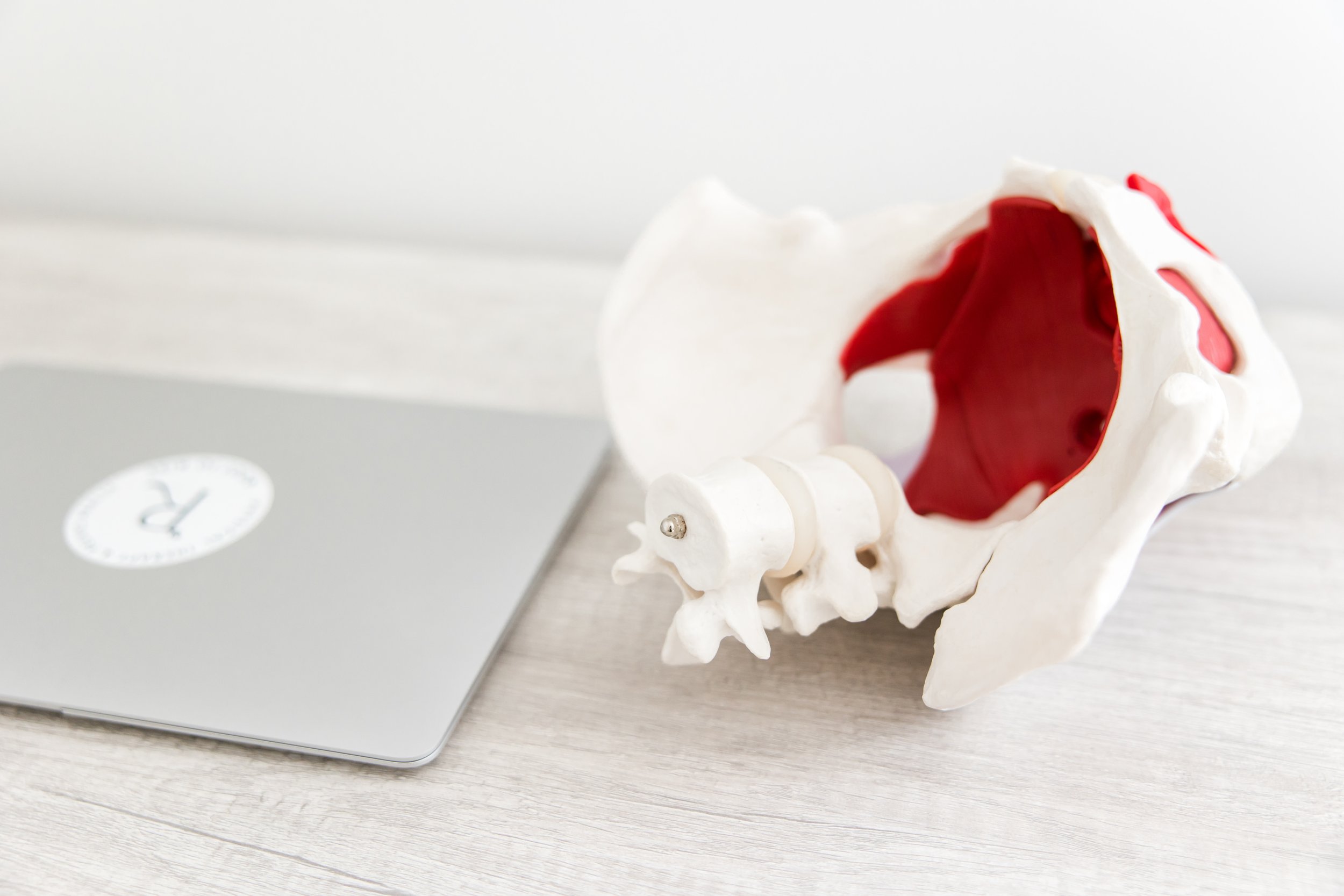How pessaries can help many with prolapse reach their goals faster
Pessaries aren’t just a last resort for managing prolapse. In fact, they can often be integrated into your pelvic floor therapy treatment plan and can play a big role in feeling better faster so you can get back to the things you love sooner.
At Root To Rise, we have worked with many patients with pelvic organ prolapse who integrate the use of pessaries into their care. While lifestyle modifications, pressure management strategies, generalized strengthening and pelvic floor muscle training are all key components in the treatment of prolapse, pessary support is indicated for some, and can help them progress better than they would without it.
This September, Dr. Jenn & Dr. Paige had the pleasure of attending the 2nd annual national pelvic health conference, Pelvicon and really enjoyed 2 lectures by Taryn Hallam, a Physiotherapist,and one of Australia's leading pelvic health experts. One was on stress urinary incontinence (SUI) and the other was all about pelvic organ prolapse (POP) and the role of pessaries in conservative treatment. We just loved her and her lectures!
She cited several excellent studies that concluded statistically significant improvement of reported prolapse symptoms in control groups that included pelvic floor muscle training and education. This is good news for pelvic health therapists and confirms what we see in our clinic!
But there’s more to the story…and using a pessary is often the answer.
Taryn shared that there are two primary support systems we rely on for organ support:the fascial system and muscular system. Identifyinghich system is impaired helps a therapist determine if a pessary would be helpful as well as what type of pessary would be best. In some cases, the fascia and ligaments can be torn or very overstretched and can be complicated by a larger “levator hiatus” (space between the 2 sides of the deep pelvic floor muscles). In this case, even a really strong and functional pelvic floor muscle group may not be enough to support the organs under the high demands of intra-abdominal pressure in our daily tasks and life.
The levator hiatus is at the level of the muscle and if the organs are descending through this space, the muscles are disadvantaged in supporting and lifting the organs alone. This is where a pessary can be a game changer.
What is a pessary? It’s defined by the International Continence Society as “a device that provides structural support for the vaginal walls and pelvic organs that lie behind them.” When we use a pessary in conjunction with pelvic floor therapy, we often see better results faster. Taryn referenced a Cochrane Review by Bugge et al in 2020 that concluded that a pessary plus pelvic floor muscle training leads to significantly more participants perceiving improvement in prolapse symptoms and prolapse related quality of life when compared to pelvic floor muscle training alone. This part of the lecture really helped substantiate why we often recommend pessaries as part of our plan of care with our patients managing prolapse.
So, what type of pessary is best? Taryn explained there are 2 subtypes of pessaries:
Support pessary: They are held in place by the shelf of the levator ani muscle and the pubic symphysis requires the support of the muscles to hold them in place. This means that they rely on reasonable pelvic floor muscle tone to stay in. The most common support pessary is the ring pessary.
Space occupying pessary: They fill the vaginal canal and are held in place by a suction. The most common space occupying pessary is called the cube or donut pessary. They can be an optimal choice when the pelvic floor muscle tone is lacking and/or the levator hiatus is large meaning there isn’t enough support to hold the ring pessary in. They can also be more helpful in cases where there is posterior vaginal wall prolapse which can be more challenging to support the ring. Tayrn also mentioned that she has worked with clients who start with a cube pessary and then transition to a ring pessary once symptoms begin to improve and the connective tissue becomes more supportive.
Most patients have two questions about pessaries. Will they need to wear their pessary all the time? Will they need to use one forever?
The answers are really different for everyone but in many cases, you might wear it for the majority of the time in the beginning and then transition to only using it during higher impact activities. From there one may wean out of using it all together. Once the tissue is lifted up out of the way and the pelvic floor muscles and surrounding soft tissues have a chance to begin working again where they need to be, we can often build enough inherent strength and function to no longer need to keep wearing the pessary.
The moral of the story here is that a pessary can often help you get better, faster, and back to doing what you love sooner. It is definitely not a last resort and often not a forever thing.
Read more of our blog posts on this topic Including All About Pessary Fittings, Pessaries and Prolapse 101 and Pelvic Organ Prolapse And Pessaries.
At Root to Rise Physical Therapy & Pelvic Health, we believe in a holistic approach to physical therapy. Our Doctors of Physical Therapy are specialized in treating both orthopedic and pelvic health conditions. Our practice also integrates acupuncture and yoga and we are always excited to be a resource for the community we practice in. We are located in Scarborough, Saco, and Bath, and are here to support you!

